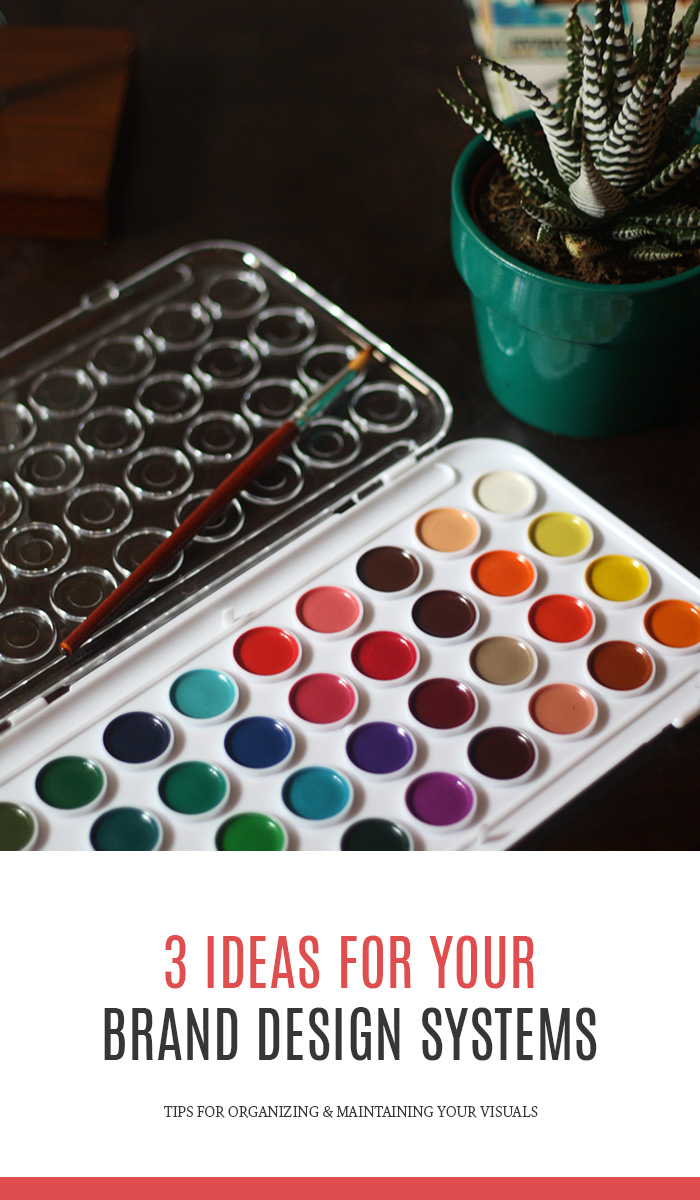3 Ideas for Branding Upkeep
This post is Day 23 in the 31 Days to a Super-Purposeful Schedule series.
This is the very last day of systems week. I know it's a probably been a lot to take in, but after today there's going to be much less homework and deep thinking. I promise!
Let's talk brand design systems.
Compared to all the other areas we've covered, this one is the most fun and, in my opinion, the least time consuming. Unlike the others before it, my design and branding systems don't need to be updated on a weekly basis. I might touch on them a little for Website and Marketing days, but I actually focus on maintaining the brand and main designs every season. I mostly do this because the focus designs for my shop change each season. If you feature a new product each month, you might want to update your systems on a monthly basis instead.
If you don't have good design systems in place you might find yourself dealing with the following...
* The appearance of your online presence is really inconsistent. (One week your visuals might look whimsical with bright colors and lots of details. The next it's more minimal with neutral colors and clean lines.)
* You have outdated ads and website images. (Still advertising Easter when it's Halloween? Products featured that aren't available anymore?)
* Your customers seem generally unhappy or confused. (They expected one experience when you really offer another. Your brand experience or design style might be to blame.)
Systems can help you streamline processes like these and keep everything up-to-date. Here are some examples - They might come in the form of a branded image template so your brand and blog posts become recognizable. These systems can be in the form of mood-boards, style guides, and mockup sets. You could also use systems to help you automate branding steps across all platforms. Once you've identified the key elements of your brand and design, systems can help you earn an amazing reputation.
3 Ideas for Organizing Your Brand Design Systems
1. Seasonal Evaluation
Have a small checklist of yes/no questions that help you rate how well you're keeping up your brand identity. I also keep a chart to write details of what customers experience at every stage of the process. These things open my eyes to my visuals as if I was a customer. When you see your business every day, it can be hard to see it as an outsider does. Another suggestion is to go through a brand detox every so often. I love this free one from Olyvia.
2. Brand Style Guide
Every brand could use a style guide to stay consistent. I'm sure you've seen plenty of moodboards and collages online that visually describe a brand. A style guide takes it one step further and pulls key points from your brand inspiration. Learn the exact color codes, outline the top fonts and sizes to stick to, choose how you want your logo to appear at all times. Your designer might even offer a mini-manual with guidelines on how to stay branded visually. You'll always have a design reference when it comes time to tell your story.
3. Automate Time-consuming Tasks
If you're attempting the same time-consuming design tasks over and over, see if there's a way you can automate this process. You could use a template for your blog that shares your newest information in the sidebar so you don't have to create new buttons. I like to use Ifttt to cut out some of those extra steps like automatically turning an Instagram Post into a Twitter Pic. If you're familiar with Photoshop Actions, these can help you retouch or style your photos for a similar look with one click.
Having systems like these really helps us from getting forgetful or just going with whatever we feel like at the time. I try to remind myself to think of how awkward it would be if large brand names like Nike or Apple started picking whatever brand message or design style based on how they were feeling each day. Putting brand design systems into place can lead to professionalism and a lot of saved time.
Today's Action Step:
Decide if you need to put any new brand design systems in place for your own business. You can use the space in your workbook to create your own seasonal evaluation checklist, sketch out some designs for a style guide and write down some automating tools to try. (*Note: if you're already subscribed and are having trouble accessing this page, email me for a refresher on the password. xo)




